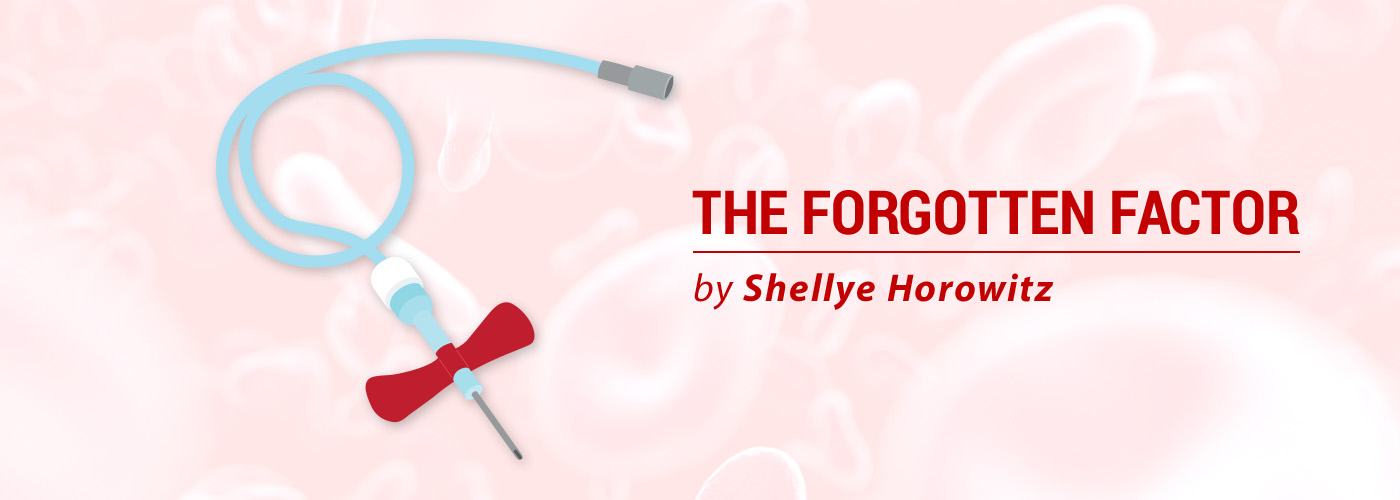Women Fight Institutional Bias in the Hemophilia Community

Have you ever been to a holiday dinner with two tables? One table is designated for “the adults” and the other is for “the kids.” Growing up, this was the case at many family gatherings. I felt offended when I, as a teenager in high school, was stuck at the children’s table with my much-younger cousins. How could I join the adults in the conversation? I was ready to be included, but they were not ready to include me.
Sadly, this is still often the reality for women in the hemophilia community who seek a proper diagnosis and treatment. They need a place at the table to have their hemophilia journeys heard, validated, and addressed.
Institutional bias
Institutional bias occurs when an organization, at its core, engages in practices that treat one group differently than another. The organization may acknowledge and affirm the experience of one group in a different manner than another group.
Unconscious bias occurs when an organization is not cognizant of the different practices and treatments they are promulgating. The fact that this occurs regularly for women in the hemophilia community is inexcusable.
Many local, national, and international organizations are working hard to combat the bias and long-held misconception that men get hemophilia and women are “only carriers.” The World Federation of Hemophilia and the Centers for Disease Control and Prevention acknowledge that anyone with low factor levels, regardless of gender, has hemophilia themselves. However, this reality is not always reflected in the hemophilia community. Hemophilia clearly remains a male-dominated world in multiple facets.
Hemophilia is often more severe in men
No one questions the reality that men are more likely to manifest severe forms of hemophilia (though there are indeed women diagnosed with severe or moderate hemophilia). Information and workshops geared toward severe and moderate hemophilia patients may place more emphasis on men, yet it is critical to incorporate women when possible.
Workshops addressing mild hemophilia are a natural space to include women. Women MUST be included in any space they can be — particularly when they still struggle to be taken seriously during bleeding episodes requiring treatment.
Women-only spaces
There are times when it is appropriate to offer women-only spaces. For example, workshops addressing bleeding issues connected to menstruation or pregnancy may not be relevant to an audience of men. However, these women-focused workshops cannot be the only mention of women with hemophilia. If the validation of women’s bleeding issues occurs solely during specialized and dedicated sessions, we miss the goal of inclusion.
We must work to consciously and deliberately include the female hemophilia experience wherever and whenever we can until it is universally understood and accepted that women have hemophilia, too. The female hemophilia narrative needs a space alongside the male hemophilia narrative. Women-only spaces are not enough, particularly if women remain excluded while the greater medical community remains incognizant of this reality.
Advertisements
Many advertisements I see for hemophilia medications feature photographs of boys and men. When a woman is on an advertisement for a hemophilia product, she is usually in the role of a supportive mother or partner, not the patient. This is highly problematic.
Women need to see other women accessing care and treatment. Medical professionals need to see women accessing care and treatment. Women must be included in images of patients using products.
Shifting the male-only narrative of the hemophilia experience means consciously choosing to place women in photos, narrations, case studies, advertisements, and research studies. We must make a vigilant effort to do this until women are naturally included in all spaces they can be.
As organizations ask speakers to present, the speakers must be given guidelines to include women with hemophilia whenever possible. Presenters must include women in examples, case studies, and use of chosen pronouns.
Sharing space with women
When women are routinely excluded, our community misses the opportunity to reduce the unconscious bias that only men have hemophilia and need access to appropriate diagnosis and care. It’s critical to afford women space in our hemophilia communities and send the strong message that women have hemophilia, too.
All programs and educational materials for patients, caregivers, and medical professionals must reflect this. If they do not, we run the risk of doing harm as we prevent women with hemophilia from being visible.
We can no longer afford to promulgate the male hemophilia experience as normal and the female hemophilia experience as an afterthought. We are all in this together, male and female patients, and our community is stronger when we bring everyone together to commune at one table.
***
Note: Hemophilia News Today is strictly a news and information website about the disease. It does not provide medical advice, diagnosis, or treatment. This content is not intended to be a substitute for professional medical advice, diagnosis, or treatment. Always seek the advice of your physician or another qualified health provider with any questions you may have regarding a medical condition. Never disregard professional medical advice or delay in seeking it because of something you have read on this website. The opinions expressed in this column are not those of Hemophilia News Today or its parent company, BioNews Services, and are intended to spark discussion about issues pertaining to hemophilia.







Comments
Colette Wintle
I too have suffered institutional bias in the way I have been treated in my NHS haemophilia care
As a woman from a family with a lengthy history of symptomatic bleeding as a result of haemophilia A and Factor 11 I have had to deal with ignorance, amongst the medical profession and even within the haemophilia community. I was once accused of lying about my condition by a male haemophiliac. After many years of campaigning and trying to educate people, I am very pleased to see the message about female haemophilia finally being acknowledged.
Shellye Horowitz
Thank you, Colette. I am so sorry to hear about your experiences. I hope that, as we educate our medical professionals, we will make the pass less bumpy for those that come after us.
Ana Clulee
Thank Shellye.
You have highlighted and confirmed what I went through when I was first diagnosed with von Willibrande bleeding tendency...
I was absolutely scared and asked the oncologists whether , “I was a haemophilia? I was told that “men are haemophilia, not women.”
I was confused and I had using the same mantra when people, friends etc asked me. I added , “ my bleeding tendency is mild comparing to others”, but by reading articles like what you have written and WHF and centre for disease control and prevention has reaffirmed that “We Are All Haemophilia “..
Yes unconscious bias exists everywhere and I am sure our local haemophilia community in our countries will address that. Arohanui..
Shellye Horowitz
I am sorry to hear you struggled so much to obtain a diagnosis. I am glad you have a proper diagnosis now. I hope our journeys will make it easier for those who come after us.